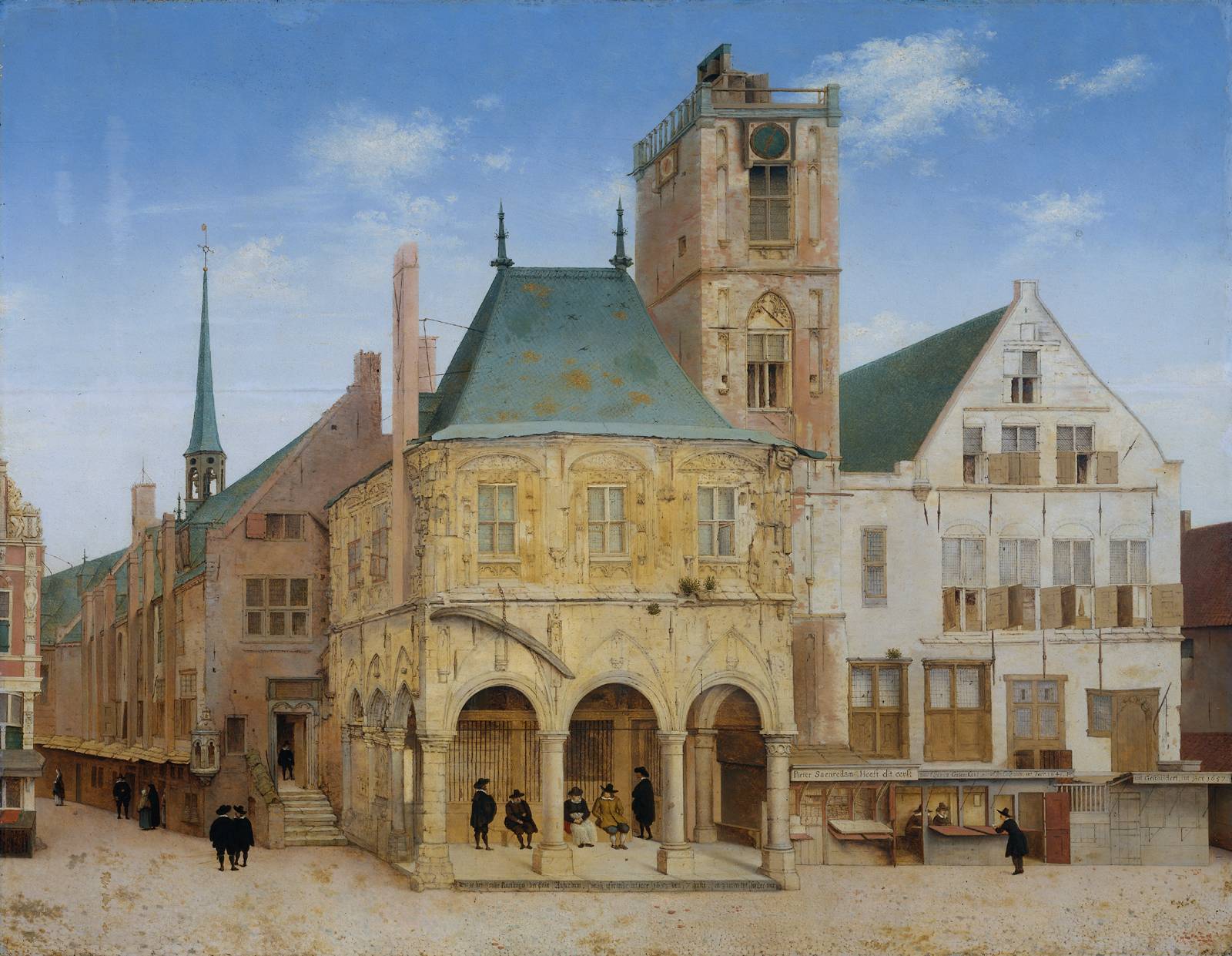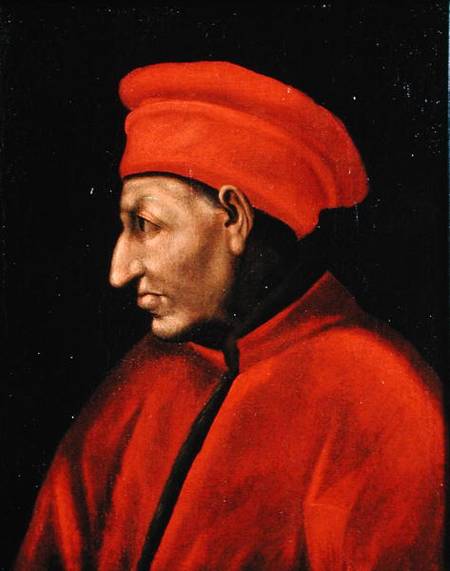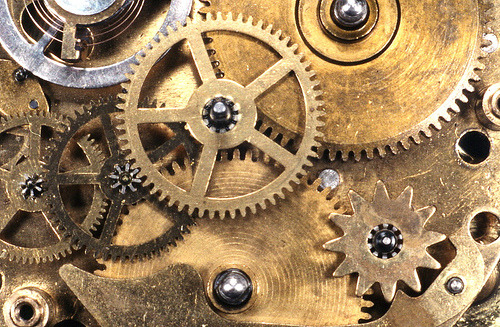Forever Blowing Bubbles
The Spell that keeps us all in thrall is most notably economic and financial in nature. The ongoing massive economic crisis, which began in 2007/2008, is really a case of one bubble popping and another attempting to form. In recent decades we've suffered through the collapse of the Asian bubble, the Russian bubble, the emerging markets bubble, the dot-com bubble, the housing bubble, the commodities bubble, and we are now tightening our belts in response to "austerities" imposed in order to prop up the bailout bubble. The global rat race zooms forward at light speed and we all get sucked into one inflationary bubble after another. What is going on?

The world is literally awash in money. The equivalent of trillions of dollars moves without rest through electronic networks at the click of a mouse, resulting in inflationary floods or recessionary droughts wherever this mass settles or flees from. There is anywhere from 500 trillion to one quadrillion US dollars in derivatives sloshing around, seeking a way to sustain and expand itself.
This staggering amount consists mainly of speculation, on bets on bets, on guesses that the price of anything material or immaterial will rise or fall at a future date. It requires constant movement and constant growth to perpetuate its existence. Like a deranged behemoth, it survives only by madly devouring more and more.
This is very obviously insane by any definition of the word. The estimated combined GDP of the planet is only about 80 to 100 trillion in US dollars, meaning that the ever-growing derivatives market dwarfs the world’s productive capacity from anywhere to five to ten times.

But this does not signify that the money is imaginary. All money represents future productive labour. It only means that the world, the labour of everyone, owes a collective debt of five to ten times our present ability to produce. This level of debt, and it does not include individual, government or personal debt which is also staggering, is quite unimaginable. We are all slaves to debt for generations to come if things do not change fundamentally. How did it get to this point?
Since the nineteen eighties, advances in information technology and the reversal of regulations impeding the flow of capital allowed for an unprecedented movement of money. It is this consequent production of debt that currently holds the globe in thrall. This however is only the most recent chapter in a very long story.
Temples of Gold
Banks, by their nature, are producers of debt. All of the money in circulation originated in a loan to some individual or institution from a bank to be paid back, including interest, through the future fruits of productive labour. This has been the case since the beginning of banking which can really be traced back to the origins of the expansionary state.
Throughout history the banks have played with, invested and re-invested, a continuing and expanding pool of debt. They have always counted on our labour to eventually balance the books if ever the final reckoning occurred. But where did this debt come from originally?

We all know by now the folksy tale of the origin of banking -- how the goldsmiths realized that they could hand out tokens for the amount of gold any given depositor had in their holdings, and that they further realized that nobody would notice if they issued more tokens than the value of the gold that they in fact held.
If these tokens were exchanged as money, so that things could be bought and sold with them, and if nobody was the wiser that they were not backed up with the same quantity of metals as the tokens indicated, then what did it matter? Everyone was happy as long as people did not lose trust in the primitive banks and did not try to cash in their tokens for real gold all at once. And so banking was born as the scam that it is.
This is a good story which makes for a great myth about greed and deceit, and it likely happened this way in certain instances, but is this really how banking began? James Breasted, and other historians of renown, state that the original banks were in fact temples.
While the Babylonian merchants were a powerful class and were even called the rulers in some communities, it was the temples, with their large possessions, which were the center of business life. They dealt in merchandise, controlled extensive lands, and loaned money like banks. The rate of interest on loans was high, – twenty percent a year, payable in monthly installments. Silver had become so plentiful that it had decreased greatly in value. Gold was used sparingly, for it was from twelve to fifteen times as valuable as silver. Commercial interests were therefore the leading influences in Babylonian life, even in religion. The temples, as we have said, had a large place in business life, and religion never proclaimed the rights of the poor and the humble or championed their cause against the rich and the powerful.
Ancient Times a History of the Early World, James Henry Breasted, p.174.
 These conclusions are echoed by the French traditionalist philosopher, René Guénon. Guénon points out that the domination of money and finance by the priesthoods, like the Druids, is evident even upon examination of ancient coins.
These conclusions are echoed by the French traditionalist philosopher, René Guénon. Guénon points out that the domination of money and finance by the priesthoods, like the Druids, is evident even upon examination of ancient coins. It may very easily be observed, provided only that ‘one has eyes to see’, that the ancient coins are literally covered with traditional symbols, often chosen from among those which carry some particularly profound meaning; thus for instance it has been observed that among the Celts the symbols figured on the coins can only be explained if they are related to the doctrinal knowledge which belonged to the Druids alone, and this implies a direct intervention of the Druids in the monetary domain.
The Reign of Quantity, René Guénon, p. 134.

Guénon further explains that this direct control of money continued almost until the beginning of the modern era.
The control of money by the spiritual authority, in whatever form it may have been exercised, is by no means exclusively confined to antiquity, for, without going outside the Western world, there is much to indicate that it must have been perpetuated until towards the end of the Middle Ages, that is, for as long the Western world had a traditional civilization.
The Reign of Quantity, p. 135.
A Universal Pontifical Empire
The original bankers were the priests and the original debtors were the sovereigns, either initiated by the priests or priests themselves. These kings depended on a ready supply of capital to raise armies, to purchase slaves, to expand markets, to construct edifices and infrastructure, to make expeditions and so on. The priesthoods of one empire, being the most literate, cosmopolitan and educated members of their society, had connections and communications with the priesthoods of other empires.
In his 1832 magnum opus, Anacalypsis, Godfrey Higgins argues that in the ancient, post-diluvian world a connected, international priesthood held sway over populations throughout the world. Whether one agrees with all of Higgins’conclusions or not, it is relevant here to demonstrate the similarity of priestly orders across cultures.
I think that I shall not be accused of giving way to idle superstition; but despite of incurring this accusation, I must say, that there appears to me, when all circumstances which I have laid before my reader are considered, much truth and very great plausibility in a passage of Dr. Woodward’s discourse on the Ancient Egyptians: ‘The colonies all carried these customs along with them to their several abodes: and there were from the beginning priests, sacrifices, temples, festivals, and lustrations, as well among the ancient Germans and Gauls, in Peru and Mexico, in Siam, China, and Japan, as in Egypt.’ What can be more striking than the custom of circumcision among the Tamuls, in Mexico, in Colchis of Armenia, in Egypt, and in Guinea and the kingdom of Congo, on the coast of Africa? It is also remarkable that this rite is found in all these places to prevail only among the Priests.
This tends strongly to support the opinion which I entertain, that the order of Chaldei, a learned order, did escape from a flood, and by means of their superior intelligence, did establish an universal pontifical empire, getting the command of the Aborigines all over the world, who were unarmed Buddhist barbarians, who also had escaped the flood; and that the rite of circumcision, or initiation, as it was called, was invented before the art of writing was known, in order to distinguish that order from the rest of mankind.
Anacalypsis, Godfrey Higgins, p. 309, Book 2.

There was, in this sense, only one ancient priestly caste on a world scale whose monopoly, centred in the temple/banks, gave it supremacy in all international trade. With this monopoly in capital, trade and communication the international priesthood was able to manipulate political events for their own benefit. They could cause gluts or shortages in resources and thus alter prices. They could expand or limit credit to sovereigns, cause slave rebellions, scandals, conspiracies and wars. Theirs was the power to decide if an empire would rise or fall. According to H.G. Wells:
Originally the priests constituted the entire learned class; the priesthood was all the learned professions. The Egyptian priest was doctor, lawyer, teacher and financier. His order supplied the only writers and poets. He was architect and artist. He stood at the side of the ruler as secretary and minister. The temple was bank, treasury and museum. This original monopolization of education by the religious organization is written plain over the history of those mediaeval and Renascence European communities from which the contemporary world derives the bulk of its tradition. If there was any collateral development of writing and reading in ancient times it was probably in relation to the account-keeping of nomadic and sea-going traders. The estate clerk and the court scribe may also have been laymen from very early times – but they must have been educated by men in the priestly tradition.
The Work Wealth and Happiness of Mankind, H.G. Wells, p. 310.
Knowers of the Cosmic Order
Historian Lewis Mumford also explores this phenomena of the monopolization of knowledge by the priests, tracing it from the Old Kingdom in Egypt to the scientific experts of the modern world.
To be effective, this kind of knowledge must remain a secret priestly monopoly. If everyone had equal access to the sources of knowledge and to the system of interpretation, no one would believe in their infallibility, since their errors could then not be concealed. Hence the shocked protest of Ipu-wer against the revolutionaries who overthrew the Old Kingdom in Egypt was based on the fact that the ‘secrets of the temple lay unbared’; that is, they had made ‘classified material’ public. Secret knowledge is the key to any system of total control. Until printing was invented, the written word remained largely a class monopoly. Today the language of higher mathematics plus computerism has restored both the secrecy and the monopoly, with a consequent resumption of totalitarian control.
The Myth of the Machine, Lewis Mumford, p. 176.

Joseph Campbell explains how this priestly monopoly of information became entrenched in the Bronze Age by promoting a mythology based on the calculation of the cycles of the planets, the Moon, and especially the Sun.
And we have discussed there also the epochal appearance toward the dawn of the Age of Bronze of an entirely new priestly mythology, oriented principally neither to the animal nor to the plant world as manifestations of the laws and mystery of being, but to the cycling, mathematically calculable order of the stars, the sun and the moon, with Mercury, Venus, Mars, Jupiter, and Saturn. As in heaven, so on earth. To the priestly knowers of that cosmic order an absolute, divinely directed moral authority was attributed; and from the time of the rise of the earliest great temples of the ancient Near East (c. 4000 B.C.) to the period to which our reading now has brought us, every known civilization – except, for a time, the Greco-Roman – took its spiritual instruction from these priestly watchers of the sky, who were supposed to have derived from the cosmic order a knowledge of the order proper as well to men on earth.
Occidental Mythology, Joseph Campbell, p. 505-6.

The priests functioned as the sole intermediaries and interpreters of this cosmic order and their authority entirely stemmed from this monopoly of knowledge.
Both to establish and maintain kingship, an infusion of divine power was essential. But the constant intercourse with Heaven, necessary for the guidance of the king, demanded professional aid from priests, magicians, soothsayers, interpreters of dreams, and readers of cosmic signs, who in turn were dependent upon the king’s secular power and wealth for their own status and office.
The Myth of the Machine, Lewis Mumford, p. 176.
In this way, the power of the priests perpetuated itself and expanded throughout the course of history. When their financial policies and manipulations brought down their former home empire they would simply relocate to a new centre of political power which they had principally helped to establish. The buildup and collapse of empires in ancient days functioned exactly like the expansion and popping of investment bubbles today. The speed and volume of capital was nowhere near the scale at which it is now but in the same way each successive empire increased the pool of debt.

In more recent times we can directly trace the rise and fall of banking centres, and the kingdoms and empires that they supported, from the late medieval period onward. From Florence to Genoa to Antwerp to Amsterdam to London to New York, with other slightly more minor centres playing auxiliary roles, we can trace the concentration and evolutionary development of capital and its financial instruments to the present day.
Financial centers persist; yet, no center lasts forever. Four of the seven centers (Florence, Venice, Genoa, and Antwerp) no longer exist. The historical record shows also a certain degree of dominance of one center over the others. Florence was the top banking center in the first half of
the 14th century, Venice was a commercial and financial power house in the 15th century, Genoa was on the financial frontier in the second half of the 16th century, Amsterdam was the top financial center in the 17th century, London in the 19th century, and New York for part of the 20th
century.
"The Evolutionary Chain of International Financial Centers", Michele Fratianni
Most of the major political events of modern history in some way stem back to deals worked out in back rooms of one or another of these centres. Banking dynasties and families have apparently come and gone but in actual fact these groups, and their wealth, have persisted as a class and a caste up to the present. They continue to manipulate and indebt governments, institutions and individuals, and events are rigged according to their designs.
It is crucially important to state here that this is not just another repetition of the tired old antisemitic diatribes on how Jewish bankers rule the world. Very valuable information on the historical connections of certain Jewish families with banking, and the violent antisemitic reactions to this, can be found in the work of Jewish scholars like Hannah Arendt.
Needless to say, not all bankers are Jews and very few Jews are bankers. To be antisemitic because some bankers are Jewish makes even less sense than to be anti-Italian because the Mafia tends to be made up of Italians. There are crooks of every race and ethnicity, and the scum always rises to the top.
Specialists of the Sacred
The banking caste of today seems to be ideologically at a great distance from the ancient priesthoods who, after all, were religious leaders in contrast to the very materialist bankers of modern times, but this difference is only apparent. The priestly orders were definitely materialist accumulators of wealth, and modern elites have their own religious beliefs which are not so dissimilar to ancient doctrines.

The great banker of Florence, Cosimo de Medici, for instance, was the man who commissioned the translation of the esoteric Corpus Hermeticum in 1463.
About 1460, a Greek manuscript was brought to Florence from Macedonia by a monk, one of those many agents employed by Cosimo de’ Medici to collect manuscripts for him. It contained a copy of the Corpus Hermeticum, not quite a complete copy, for it included fourteen only of the fifteen treatises of the collection, the last one being missing. Though the Plato manuscripts were already assembled, awaiting translation, Cosimo ordered Ficino to put these aside and to translate the work of Hermes Trismegistus at once, before embarking on the Greek philosophers... In the year 1463 word came to Ficino from Cosimo that he must translate Hermes first, at once, and go afterwards to Plato.
Giordano Bruno and the Hermetic Tradition, Frances A. Yates, p. 12-13.
Throughout the modern period the religious ideology of the banking elites has been a mix of hermeticism, papal Catholicism, esoteric Talmudism, Freemasonry, deism, and mechanistic scientism. While these creeds seem to be at odds and even contradictory from an exoteric perspective they all emphasize the need to dominate the natural, material world and the necessity of maintaining a select elite of intermediaries between this world and the realm of Spirit. It does not really matter whether this elite be Catholic priests, Jewish rabbis, Freemasonic grandmasters, or specialized scientists.
The objective for all of these groups is to convince the masses that these “specialists of the sacred” alone possess spiritual truths, and that it is essential to channel all desires for the divine through them. In more recent modern times, this exclusionary con has bloated into the scientific denial of the Spirit altogether. Only the scientists are left to teach us, the uninitiated, the mysteries of the universe which, they explain, are really not that mysterious after all. Only the fully dominated realm of matter is left for us to attempt to survive in.

The very word ‘humanism’ implies a pretension to bring everything down to purely human elements and thus (at least in practice if not yet by virtue of an expressly formulated theory) to exclude everything of a supra-individual order. The next thing to do was to turn the attention of the individual towards external and sensible objects, in order as it were to enclose him, not only within the human domain, but within the much narrower limits of the corporeal world alone; that is the starting point of the whole of modern science, which was destined to work in the same direction, thus making the limitation more and more effective.
The constitution of scientific or, if preferred, of philosophico-scientific theories also had to be embarked upon gradually; (and here it is necessary to do no more than to summarize matters already dealt with) mechanism prepared the way directly for materialism, which was to mark the more or less irremediable limitation of the mental horizon to the corporeal domain, thenceforth looked upon as the only ‘reality’, and itself stripped of everything that could not be regarded as simply ‘material’; naturally, the elaboration of the very notion of ‘matter’ by the physicists had an important part to play at this point.
We are left, as usual, with only the authority of the "priests", at the present time clad in white lab coats instead of black frocks, to interpret the mysteries for us. Self-initiated exploration is ill-advised and tantamount to insanity. And, for those plucky few who insist on finding out things for themselves, the priests' strong arm, the State, is legally enabled to crush any resistance that effectively counters the monopoly of knowledge. But from where did the State arise?
The Reign of Quantity, p. 233.
No comments:
Post a Comment